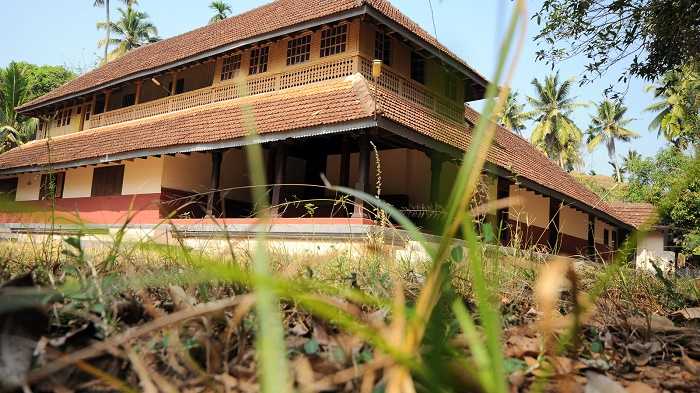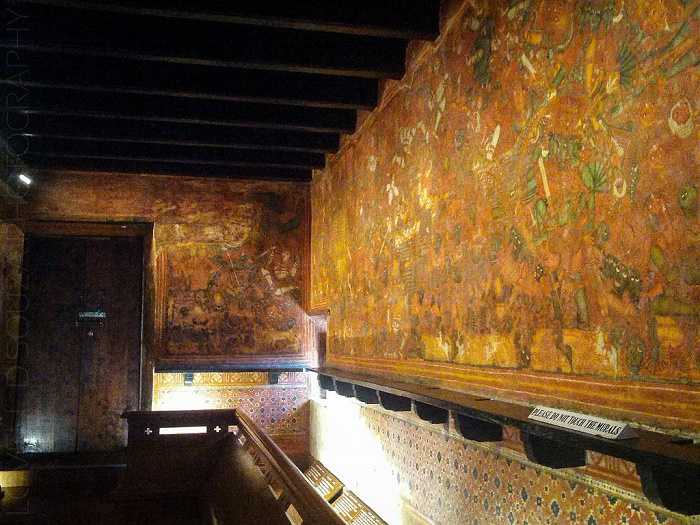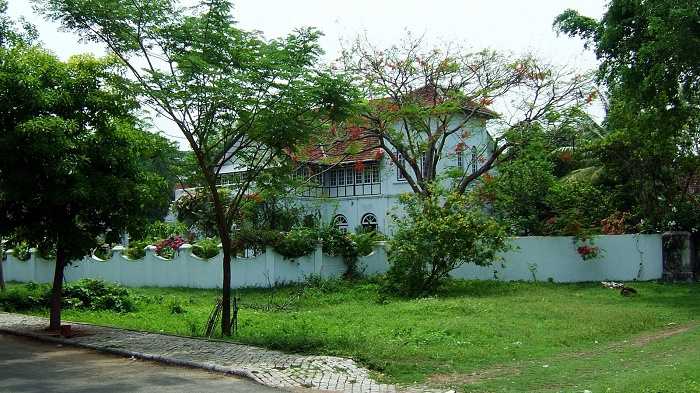When was it built: Around 1555
Who built it: Portuguese
Where is it located: Mattancherry, Kochi, Kerala, India
Why was it built: As a Royal Palace
Architectural Style: Fine mix of colonial and Kerala style of architectures
Visit Timing: 9:45AM–1PM, 2–4:45PM on all days excepting Fridays.
How to Reach: Mattancherry is around 10km away from Ernakulam, which is well-connected with other cities of India by rail. Avail bus or boat service from Ernakulam to reach Mattancherry. Cochin International Airport, is well-connected with several national cities and a few international ones, is the nearest airport from Mattancherry at a distance of around 45 km.

Mattancherry Palace, also called Dutch Palace, is located in Mattancherry, on the banks of the backwaters of Kochi (erstwhile Cochin) in Kerala, India. It is an architectural chef d'oeuvre of the 16th century illustrating a fine mix of colonial and Kerala style of architectures. This palace, built on the conventional Kerala style of N?lukettu with four buildings set around a quadrangle, was gifted by the Portuguese to the Raja of Kochi, Veera Kerala Varma. Extensions and renovation works were done in the palace by the Dutch in the 17th century following which it became popular as the Dutch Palace. The palace that also houses a temple of goddess Bhagavati in the courtyard today stands as a famous museum that holds exquisite and intricately detailed ancient Kerala murals illustrating Hindu temple art as also portrait gallery of the Rajas of Kochi having rare collection of royal artefacts. The Palace not only offers a brief view of different architectural styles under one roof but also the grandeur and lifestyle of the royals in the bygone era.

Image Credit: remotetraveler.com
History
The Portuguese explorer Vasco da Gama received a warm welcome from the rulers of Kochi when he landed at Kappad in 1498. The Portuguese were allowed to build factories. The Palace was constructed by the Portuguese in the mid-16th century sometime around 1555 and presented as a generous gift to the King of Cochin, Raja Veera Kerala Varma. Many sources mention that it was built and gifted to the King to mollify him and make amends for plundering a temple in the area. While others opine that it was a goodwill gesture to secure trade privileges. Several attacks inflicted by the Zamorins of Calicut were warded off by the Portuguese and eventually the Rajas of Cochin practically came under the vassalage of the Portuguese. In 1663 the Dutch took over. They conducted some extension and major renovation works in the Palace. Renovations were also made subsequently by the Rajas that gave it a more Hindu texture which over the centuries and the Palace has emerged as one of the most significant places that illustrate primitive Hindu Temple Art. The Kings of Kochi used this Palace as royal residence for around two centuries and held significant rituals and functions like the coronation ceremony. It was declared as a Government of India protected monument in 1951. The upper floor of the double storied building that include the bed chamber, coronation hall, dining hall and ladies chamber among other rooms holds the present museum that was set up in May 1985.

Architecture & Design
The Place that displays a blend of colonial and Kerala style of architecture is in the shape of a quadrangular building constructed in the traditional N?lukettu style of Kerala architecture. Typifying conventional Kerala mansion, this Palace has four wings on four sides with a courtyard at the centre which is an abode to a small temple. The temple is dedicated to the tutelary deity of the Kochi royal family, Pazhayannur Bhagavathi. A Shiva temple and a Krishna temple are also placed on two sides of the Palace. The architectural blend is eminent from the designs of the arches and the dimensions of its chambers that exhibit European style of architecture. The wooden ceiling of the Dining Hall is elaborately decorated and the floor of the Palace is adorned with one of the exceptional type of Kerala flooring that although display a look of polished black marble is in fact made of a mix of burned coconut shells, plant juices, charcoal, egg whites and lime.

Image Credit: remotetraveler.com
Attractions at the Palace
The rich mural paintings embellished on the walls of the Palace executed in vivid colours applying tempera technique illustrating Hindu temple art are one of the main attractions of the Palace. The themes of these murals are based on the two great Indian epics, the ‘Ramayana’ and the ‘Mahabharata’, as also on other mythological legends associated with Hindu gods. Some of them also include scenes from works of the great Classical Sanskrit writer and poet, Kalidasa - particularly his Sanskrit epic poem ‘Kumarasambhavam’. The Palliyara that is bed chamber of the King located at the southwest corner of the building, left from the entrance, is an eye-catcher. The room with low wooden ceiling adorns around 48 paintings covering the wall surface of 300 sq. ft. These 16th century paintings are the earliest ones of the Palace which are themed on the ‘Ramayana’. Themes from Krishna Lila also finds place in some of them. The coronation hall of the palace which is one of the rooms in the upper floor displays some of the striking murals displaying great compositions like sleeping Vishnu referred as Ananthasayanamurti; Rama’s coronation; Goddess Lakshmi seated on a lotus; and Lord Shiva and Goddess Parvati seated with Ardhanariswara among others. Floral designs in wood craft ornate the hall’s ceiling. It also displays portraits of the Kings of Kochi starting from 1864.
The Palace also exhibits various weapons like ceremonial spears, daggers, sheathed swords and artilleries like cannon, an ivory palanquin, golden thread woven ceremonial dresses of the Kings, royal caps, royal umbrellas, a howdah, stamps and coins of those era and royal furniture among others. The 17th and 18th century drawings of the Dutch showing important plans of Cochin are also under display.
A Visit to the Palace
Mattancherry Palace, a reminiscent of the influence of the Portuguese and the Dutch today stands as one of the finest museums in India from both historical and architectural perspectives. Over the years it has become one of the prominent tourist destinations of Mattancherry attracting both national and international tourists round the year.



